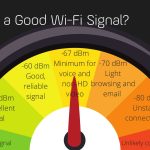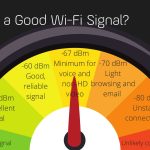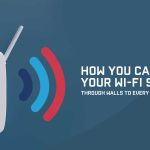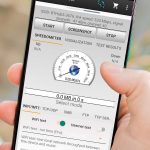To boost your signal strength quickly, try relocating closer to your Wi-Fi router, removing obstructions, or restarting your device. These simple steps can often resolve connectivity issues instantly. Additionally, updating your device’s software or resetting your network settings can significantly improve signal quality.
If you’re wondering how to enhance your signal strength, the key lies in optimizing your device’s environment and settings. Moving closer to your Wi-Fi source, reducing interference from other electronics, and keeping your software up-to-date are effective strategies. These small adjustments can make a noticeable difference in your connectivity, ensuring you stay connected without frustrating interruptions.
Struggling with weak signal strength can be incredibly frustrating, especially when you need reliable internet for work, streaming, or staying in touch. Signal issues may stem from various factors like distance from your router, physical obstructions, or outdated device settings. Fortunately, improving your signal strength doesn’t require technical skills—simple changes around your home or workspace can dramatically boost connectivity. By understanding these common causes and applying straightforward solutions, you can enjoy faster, more stable internet without hassle.
How to complete signal strength?
Understanding Signal Strength
Signal strength indicates how well your device can connect to the network. Strong signals mean faster internet, clearer calls, and fewer drops. Weak signals can cause slow browsing, call drops, and difficulty connecting to Wi-Fi or cellular networks. Recognizing how to read and improve signal strength helps keep your device functioning smoothly.
Factors Affecting Signal Strength
Many elements influence signal quality. These include physical obstacles such as walls and furniture, distance from signal towers or Wi-Fi routers, interference from other electronic devices, and network congestion. Weather conditions can also impact cellular signals, especially in stormy weather or heavy rain.
How to Check Signal Strength on Your Device
Knowing your current signal strength is the first step in improving it. On most smartphones, signal bars show basic information, but you can get precise data by accessing specialized codes or settings.
Checking Signal on Android
Most Android devices display signal bars at the top of the screen. For detailed info, dial *#*# العسكرية3#*#* or use a third-party app like “Network Signal Info.” These tools show signal quality in dBm, where closer to -50 dBm indicates a strong signal.
Checking Signal on iPhone
iPhones display signal bars in the top corner. For deeper analysis, you can enable Field Test Mode by dialing *3001#12345#* and pressing call. The screen shows detailed signal metrics, including dBm readings.
Improving Signal Strength in Your Home
Many users face weak Wi-Fi signals inside their homes. Several simple steps can significantly boost your connection.
Optimal Placement of Router
Place your Wi-Fi router in a central location away from walls or metal objects. Elevate the router on a shelf or high spot for better coverage. Avoid enclosed spaces like cabinets which can block signals.
Reducing Obstacles and Interference
Keep electronic devices, microwaves, cordless phones, and Bluetooth gadgets away from your router. These can interfere with Wi-Fi signals. Removing physical barriers like thick walls or large furniture can also help.
Upgrading Your Equipment
Invest in a newer router supporting the latest standards such as Wi-Fi 6. These models offer better range and faster speeds. Using a mesh Wi-Fi system can create a broader, more reliable network across larger homes.
Enhancing Cellular Signal on Mobile Devices
Weak cellular signals can be frustrating, especially outdoors or in remote areas. Here are some tips to boost your mobile signal.
Adjusting Device Settings
Switch your device to airplane mode for a few seconds then turn it back on. This refreshes your connection to cellular towers. Also, disable and re-enable mobile data to reset the network connection.
Choosing Better Network Bands
Some phones allow manual selection of network bands in settings. Connecting to a less congested band can improve signal quality. Contact your provider to see available options in your area.
Using Signal Boosters
Cell signal boosters amplify weak signals inside buildings. They consist of a booster unit, a directional antenna outside, and an interior antenna. Installing one can dramatically improve coverage.
Utilizing External Antennas and Accessories
External antennas can provide a stronger connection when placed outside or on rooftops. Many mobile phones and routers support these accessories. They focus the signal toward cell towers or Wi-Fi routers for better reception.
Choosing the Right External Antenna
Select an antenna compatible with your device and supported frequency bands. Directional antennas focus signals in one direction, which is ideal if the tower is nearby in a fixed direction. Omnidirectional antennas work well when signals come from multiple directions.
Connecting External Antennas
Most devices require specific cables or adapters to connect external antennas. Follow manufacturer instructions carefully. Proper installation ensures maximum signal gain and device safety.
Additional Tips for Maintaining Strong Signal
Maintain your device and surroundings for consistent signal strength over time.
Regularly Restart Devices
Restart your smartphone or router periodically to clear temporary glitches and refresh network connections.
Keep Software Up-to-Date
Update your device’s operating system and apps. Updates often include improvements to network connectivity and signal management.
Limit Background Data Usage
Reduce background apps that consume bandwidth, which can clog your connection and make signals seem weaker.
Monitoring Signal Strength Over Time
Track your signal quality with apps and tools to identify patterns and troubleshoot persistent issues.
Using Signal Monitoring Apps
Apps like Network Signal Info provide real-time data on signal strength, network type, and quality. Use these tools regularly to assess improvements after adjustments or upgrades.
Creating a Signal Map
Test your signal in different areas of your home or outdoor space, noting where strength is strongest. This helps identify the best spots for placement of routers or external antennas.
Understanding Signal Types and Technologies
Different network types influence signal quality and speed.
Wi-Fi Standards
Wi-Fi 5 (802.11ac) and Wi-Fi 6 (802.11ax) offer faster speeds and greater coverage than older standards. Choose devices supporting these standards for better indoor signals.
Cellular Technologies
LTE, 4G, and 5G networks provide varying speeds and coverage. 5G offers faster connections, but coverage is still expanding. Ensure your device supports the latest cellular technologies for optimal performance.
Common Challenges and How to Overcome Them
Some issues are common and have straightforward solutions.
Dead Zones
Areas with no signal are called dead zones. Moving your router or installing an external antenna can resolve this.
Network Congestion
Too many devices on one network slow down your connection. Upgrading your plan, switching channels, or using dual-band routers helps avoid congestion.
Firmware and Software Issues
Outdated firmware can cause connectivity issues. Regularly update your router and device software to fix bugs and improve performance.
Enhancing your signal strength involves understanding your current connectivity, optimizing device placement, upgrading equipment, and reducing interference. Regular checks and timely upgrades ensure a stable and fast connection. Remember, a better signal means more reliable communication and a smoother online experience. By following these steps, you can improve your signal strength and enjoy seamless connectivity in your daily life.
Fallout 76 – Signal Strength Quest – Complete Walkthrough
Frequently Asked Questions
What steps should I follow to improve my signal strength on my device?
Start by relocating your device to a position with fewer obstructions, such as walls or large furniture. Ensure you’re within a good range of your Wi-Fi router or cellular tower. Restart your device and router to resolve any temporary network issues. Additionally, update your device’s software and carrier settings for optimal performance. Consider removing any devices or objects that might be interfering with the signal.
How can environmental factors affect my signal quality?
Environmental elements like thick walls, metal objects, and electronic appliances can weaken your signal. Weather conditions such as heavy rain or storms may also disrupt wireless signals, especially for cellular networks. Being in a basement or underground area reduces signal strength due to low coverage. To maintain better signal quality, stay in open or less obstructed spaces whenever possible.
What equipment adjustments can I make to enhance signal strength?
Use a signal booster or repeater to extend coverage in areas with weak reception. Ensure your router or modem is positioned in a central, elevated spot away from interference sources. Switching to a higher frequency band, such as 5 GHz instead of 2.4 GHz, can also improve performance if your device supports it. Regularly update your network hardware firmware to benefit from performance improvements.
How does network congestion impact signal strength, and what can I do about it?
High network congestion occurs when many devices connect to the same network segment, causing slower speeds and weaker signals. To reduce congestion, limit the number of active devices during critical tasks, or schedule heavy usage during off-peak hours. Using a dual-band router allows you to separate devices across different frequency bands, easing the load on each network. Ensuring your network hardware is up-to-date also helps manage traffic efficiently.
Are there specific settings on my device I should tweak to improve signal reception?
Adjust your device’s network settings to prioritize connection stability. Manually select a network or frequency band to avoid automatic switching to weaker networks. Reset network settings if you experience persistent issues, and enable any available optimization features. Turning off and on airplane mode briefly can also help refresh your device’s connection to the network, improving signal quality.
Final Thoughts
To complete signal strength, start by positioning your device in an open area away from obstructions. Adjust your antenna or move closer to the signal source for better reception. Regularly check your device settings to ensure they are optimized for optimal connectivity.
In summary, how to complete signal strength? Focus on placement, device adjustments, and maintenance to improve your connection. Applying these simple steps can significantly enhance your signal quality.




